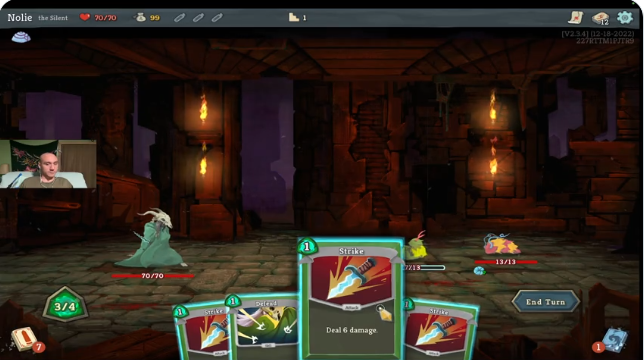The first human recipient of a Neuralink implant plays Slay the Spire, Old School RuneScape and a range of other popular games, using the implant to translate his neural signals.
Elon Musk’s neurotechnology company also revealed in a new update that a number of the wires carrying the implant’s electrodes had pulled out of the patient’s brain, causing a temporary drop in brain-computer interface (BCI) performance.
Back in January, Neuralink co-founder Elon Musk took to X to announce that the company had implanted its first “N1” brain chip into a human patient’s head as part of its Precision Robotic Implantable Brain-Computer Interface (PRIME) study. The patient was later revealed to be 29-year-old American quadriplegic Noland Arbaugh, who became paralyzed below the shoulders after sustaining a spinal injury during a diving accident about eight years ago.
During the surgery, a round section of the skull was removed to give a specialized robot access to part of Arbaugh’s brain. The robot uses a needle thinner than a human hair to insert a collection of 64 ultra-fine filaments carrying electrodes into the gray matter. These newly installed sensors were designed to detect the patient’s neural signals and send the resulting data up the wires to the main body of the N1 implant, which was installed in the skull cavity created during the surgical procedure. The signals from the implant are then transmitted to a Neuralink app, which is trained to decode the intent behind the information and translate it into actionable actions, such as moving a computer cursor.
Before the surgery, Arbaugh had to rely on a mouth stick — an assistive device that allows the user to apply pressure to a touchscreen after it’s placed in the mouth — to play games and interact with the digital world. While this allowed Arbaugh to use the iPad, it came with a number of drawbacks. For example, to use the mouth stick, he had to be seated upright and have a caregiver hand him the tool. Additionally, he could not speak properly while using it, and prolonged use had the potential to cause spasms and cause pressure sores.
“I thought the mouth stick was much better than the BCI a month ago when we compared them I saw that the BCI was just as good if not better and still improving; the games I can play now are much better than before,” Arbaugh said in an update on the Neuralink blog marking the 100-day anniversary of his surgery. “I beat my friends at games that, as a quadriplegic, I shouldn’t be able to beat.”
Neuralink revealed that Arbaugh recently used the brain-computer interface for 69 hours in one week, of which 34 hours were for recreational purposes. During this time, Arbaugh used the assistive technology to surf the Internet, learn new languages, and play a range of video games, including the cheat construction title Slay the Spire, Old School RuneScape, Mario Kart 8 Deluxe, and Sid Meier’s Civilization 6, all by manipulating the cursor with your mind. The scientists are also working on custom gaming functionality within the Neuralink app, which is designed to give Arbaugh more freedom over how and when he can connect and play games.
What am I thinking? https://t.co/hq4n2Ep0BL
— Noland Arbo (@ModdedQuad) May 5, 2024
In the 100 days since his surgery, Arbaugh set what Neuralink described as “a new world record for human BCI cursor control.” It can currently use the interface to estimate a value of 8.0 bits per second (BPS), which is the measurement used by the scientific community to evaluate the accuracy and speed of computer cursor movements. For context, Neuralink engineers achieved about 10 BPS using a physical mouse, a result that Arbaugh is looking to best in the coming months.
The company also revealed that an unspecified number of the wires carrying electrodes that were inserted into Arbaugh’s head during the installation of the N1 implant had “pulled out” of his brain in the weeks following the surgery. The movement of the threads forced Neuralink scientists to change the algorithm responsible for collecting and translating the neural data, which the company says compensated for the loss of performance.
IGN has reached out to Neuralink for comment on whether thread withdrawal is an expected complication and whether the development could in any way affect the patient’s health, and will update this article to reflect any subsequent response.
Moving forward, Neuralink aims to increase Arbaugh’s ability to control the cursor — in part by combating a known problem known as “cursor drift,” which is combated by developing a “bias correction” system — and by adding new functionality . Specifically, the researchers hope to allow users to control physical external assistants, such as robotic arms and wheelchairs, using only the connection, which in turn could help quadriplegic patients gain a greater degree of autonomy.
Catch up on our earlier coverage to keep up with Neuralink’s path to human trials and past controversies surrounding animal testing complaints.
Anthony is a freelance contributor covering science and video game news for IGN. He has over eight years of experience covering groundbreaking developments in multiple scientific fields and has absolutely no time for your antics. Follow him on Twitter @BeardConGamer



